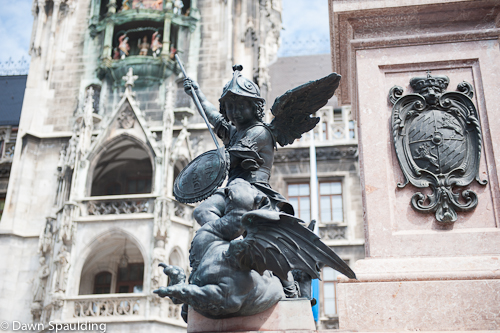
In Marienplatz, the city’s main square
A German friend once told me that Bavaria is the Texas of Germany, which I don’t think is meant to be a compliment. True, the region is religiously and socially conservative and its residents speak with a unique accent, but as a tourist I’m always pleased to find Germany’s most enjoyable clichés here: Lederhosen, cavernous beer halls, oompah music.
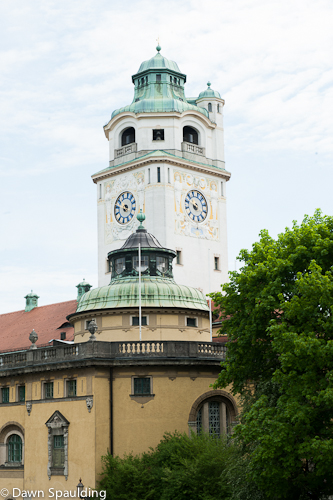
Skyline
I also love that Munich is drenched in Rococo, a style that permeated the city in the 18th century.
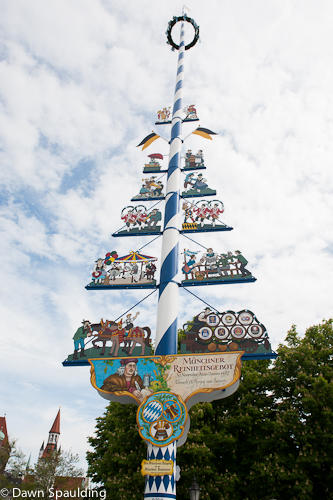
Viktualienmarkt maypole displays artisan symbols and traditional white-and-blue Bavarian stripes
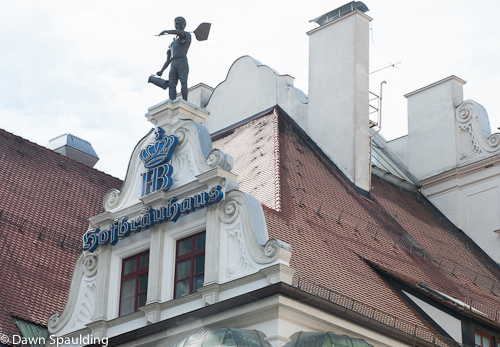
Hofbräuhaus brewery, first established by Wilhelm V in the 16th century
Munich sustained a lot of ruin and destruction during the two world wars, but was mostly rebuilt in time for the 1972 Olympic Games.
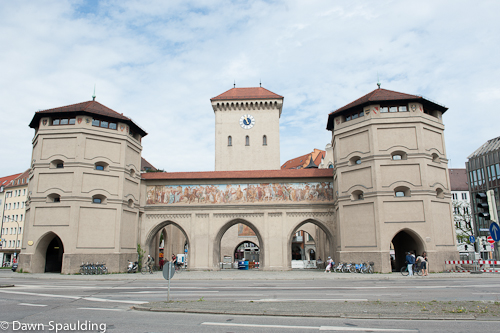
Isartor, a medieval gate
In the Middle Ages, Munich’s growing city center was protected by a wall, Äußere Stadtmauer, with four large towers. Though the wall was demolished in the 18th century during a growth spurt, some gates remain.
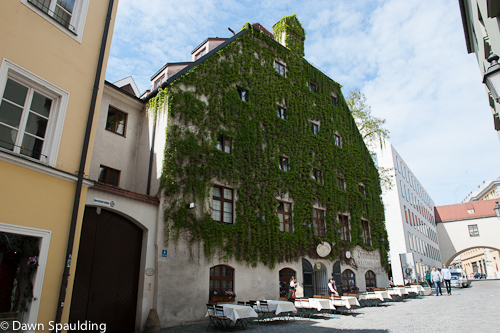
Setting up for lunch
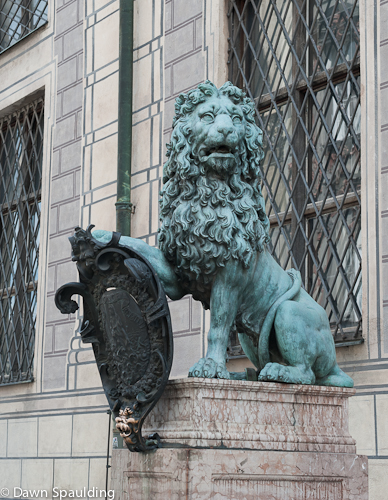
Outside Residenz, the main palace
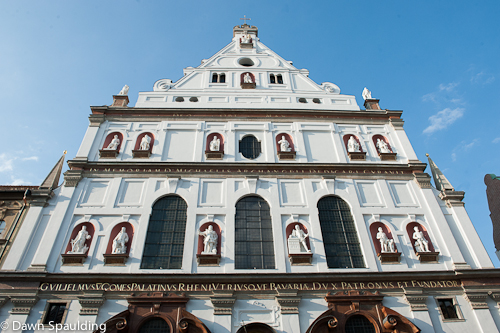
16th-century Michaelskirche
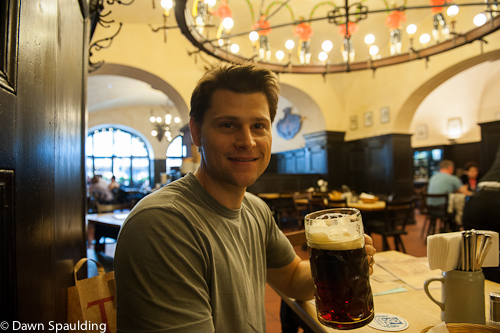
Angelo’s favorite part of Munich
Munich is an ideal walking city. It’s full of appealing architecture, impressive museums and, of course, food and beer. It’s easy to spend a few days here just wandering around and hanging out.
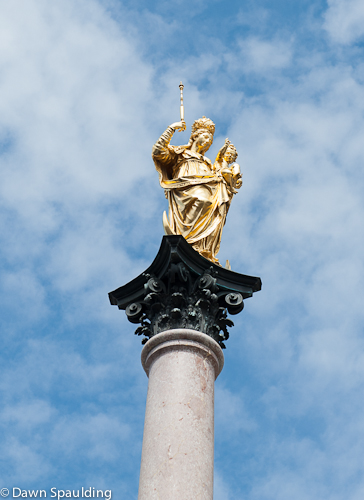
17th-century Mariensäule
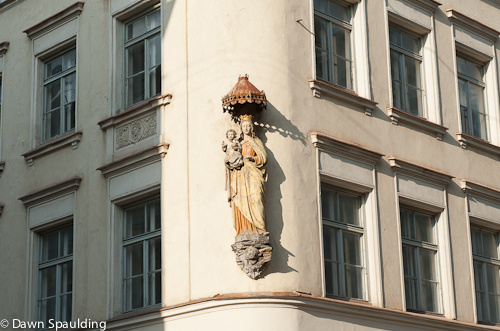
Remember to look up in Munich!
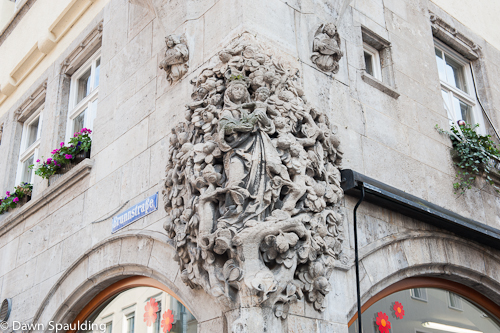
Building detail
No comments yet.